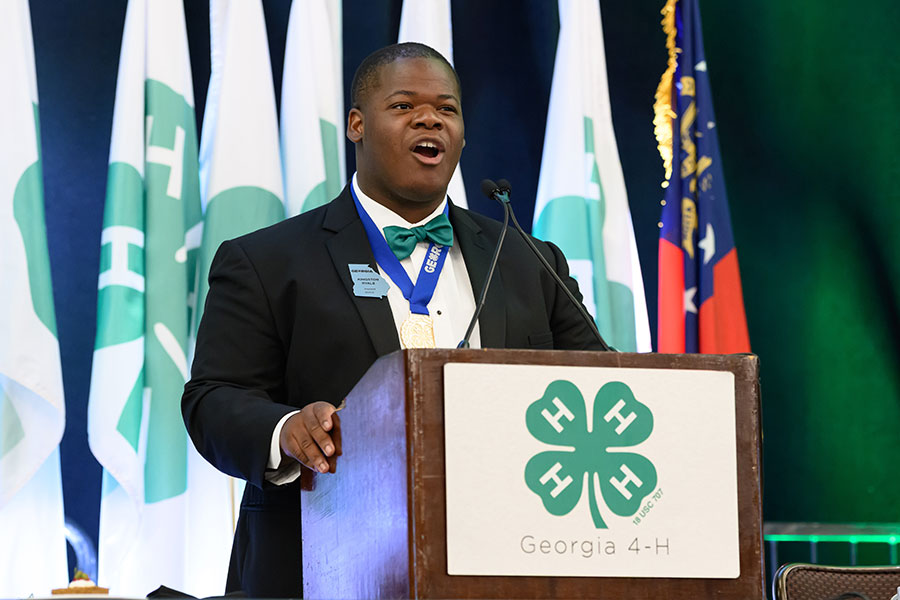School children attending the 4-H environmental education program have been digging in the dirt and coming up with history.
They owe it all to one bored boy.
"In the spring of 1989 I was teaching a forestry class at Rock Eagle," said Rick Espelage. "And a bored student kicked up a corked-neck bottle."
Espelage is an education program specialist for the University of Georgia Extension Service. He works in the environmental education program at the Rock Eagle 4-H Center near Eatonton, Ga.
"The bottle turned out to be from the early 1800s." Espelage said. "We shifted gears and started to discuss archaeology and history."
Shortly, the students found what turned out to be the foundation for a log cabin built about 1807.
Espelage approached the program coordinators and got permission to include an archaeology curriculum in the environmental education program.
"We now have discovered 11 different features," Espelage said.
The finds include a log cabin, the main house, the kitchen, a well, a privy, the dump, wagon roads, a slave house, a carriage house, rock walls and other features.
"The great thing about this project is the long time it covers," Espelage said. "The early log cabin was built by slaves around 1807. The main house wasn't built until 1838. And the Scott family lived there until 1900. That's a long time to study."
Almost 1,400 of the plantation's original 1,500 acres are now the Rock Eagle 4-H Center.
"Giles Tompkins claimed this land through a land grant," Espelage said. "He met the Creek chief White Bird King to find out about the eagle-shaped mound on his land. Tompkins gave his word that none of his heirs would ever destroy the mound."
The Tompkinses stood by the promise. They later sold the land to the federal government so the mound would be forever protected.
"That is a great lesson for the students," Espelage said. "It really teaches them the power of a promise. A promise can even change history."
More than 41,000 school children visit Rock Eagle each year. Groups of them are now reconstructing history with period tools Espelage has collected from local farmers and at flea markets.
"We have reconstructed the privy, smoke house and carriage house," Espelage said. "We have about 15 logs up at the log cabin, built by fifth- through seventh-grade classes who learned to hew logs with a broadaxe."
When the project is completed, it will be a living history farm. The main house will include living quarters and an area to house the artifacts the students excavated.
"Rick has helped the students excavate the site and classify the items they find just like real archaeologists," said Diane Davies, state coordinator of the 4-H environmental education program.
"He took a very small living-history section of our program and turned it into something phenomenal," she said.
The new living-history section includes the archaeology digs, parts of the Natural History Museum and pioneer-life classes.
"We work with old tools and split shingles. And in spring we plant a pioneer garden," Espelage said. "Just this year we added chickens."
In the evenings, the students sit around the campfire and sing pioneers' songs. Teachers in period dress tell pioneers' stories.
The students have dug up more than the coffee grinder handles, old jugs, spoons, forks and harmonica parts. They've dug up some history they will never forget.
And at Rock Eagle, they're leaving behind an outdoor history learning center that will serve students for years to come.






